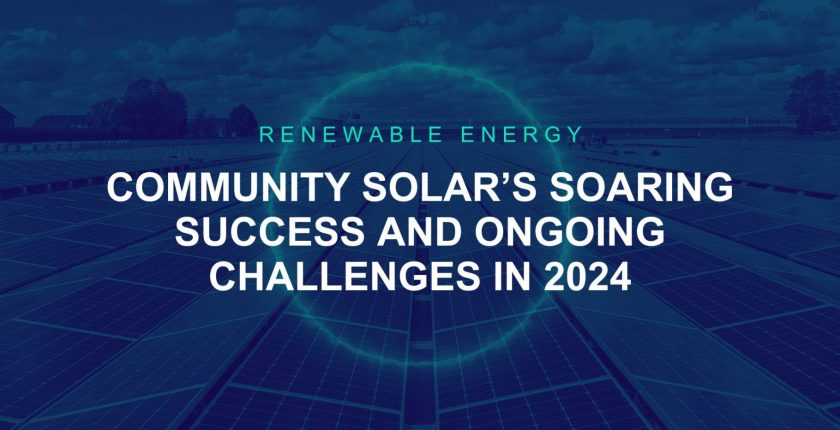Community Solar’s Soaring Success and Ongoing Challenges in 2024
Community solar is riding the wave of unpresented success, and the numbers speak for themselves. With projects spanning across 41 states, 19 of which have codified programs, the U.S. boasts an impressive 6.2GW of community solar capacity, according to the Solar Energy Industries Association. As clean energy gains popularity, community solar shines as a key player, bringing a sustainable future to communities across the country.
In the most recent episode of the ‘Factor This!’ podcast, Bruce Stewart, CEO of Perch Energy, a platform for managing community solar subscribers, provides an insightful exploration of the current state of community solar. Stewart discusses upcoming markets anticipated for 2024 and confront the challenges within the sector with a proactive approach.
As of 2024, the growth of community solar projects is evident, exemplified by Summit Ridge Energy’s Speedway Solar project, a 2,495MW initiative situated south of Joliet. This signifies the 75th community solar farm within ComEd’s Northern Illinois service territory. The acceleration toward cleaner energy alternatives is underway, with community solar emerging as a frontrunner in this transition.
While California has long been a solar leader, its community solar journey has faced its share of hurdles since 2013. Developers have grappled with rules that made projects seem unfeasible, resulting in less than 50MW installed in 2022. However, the stage is set for a triumphant comeback. The California Public Utilities Commission (CPUC) is on the brink of unveiling a revamped community solar program, mandated by Assembly Bill 2316. This time, the focus is on pairing solar power with energy storage and promoting environmental justice. The reboot is a beacon of hope, and developers are already actively seeking properties to be part of this transformative initiative.
Community solar uniquely prioritizes fairness and environmental equity by providing access to clean energy for those without suitable roofs. However, attracting low-income customers poses challenges due to skepticism about perceived discounts and the complex income verification process. Perch Energy proactively addresses this issue, initiating outreach efforts nine months before project commissioning. Their strategy involves digital marketing, partnerships with affordable housing, and even door-to-door education.
Perch Energy is not only recognizing challenges but actively contributing to solutions. Through a collaborative effort with the Department of Energy, they have developed the Low-Income Clean energy Connector, a digital tool aimed at simplifying LMI customer verification. This tool is poised to enter its beta phase and will be tested in three states: New Mexico, Illinois, and Washington DC. The ultimate objective is ambitious – to deliver $1 billion in electricity bill saving 5 million customers by 2025. Stewart underscores the significance to trust and ease in this initiative, envisioning a future where the community solar journey becomes more seamless for both customers and developers.
Looking forward to the rest of 2024, the community solar sector isn’t merely expanding; it’s undergoing a transformation. Challenges are not hinderance but opportunities for innovation, creating a more inclusive and sustainable energy future. Guided by leaders, navigating the dynamic landscape of community solar which is promised to be an exhilarating journey, one where clean energy and community empowerment go hand in hand.
